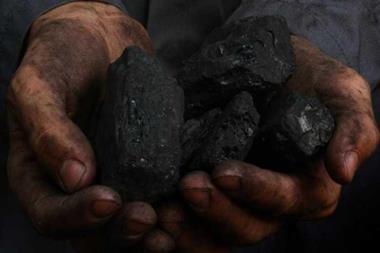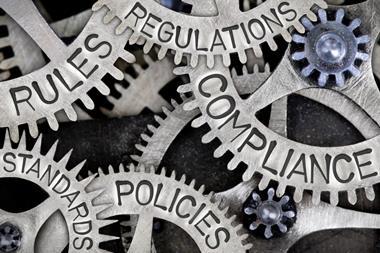Bangladesh, China, Myanmar, India, Cambodia, Vietnam and Indonesia are all at their lowest points in the ranking since 2017
Asian manufacturing hubs have witnessed a significant increase in modern slavery over the last four years, and the risk is set to intensify further as the economic fallout from COVID-19 takes full hold, according to research from Verisk Maplecroft.
The latest annual edition of the company’s Modern Slavery Index reveals that Bangladesh (18th highest risk globally), China (20th), Myanmar (23rd), India (25th), Cambodia (32nd), Vietnam (35th) and Indonesia (44th) all sit at their lowest point in the ranking of 198 countries since 2017. The index measures the risk to business of the possible association with slavery, trafficking in persons and forced labour in supply chains, operations and service providers.
Asian manufacturing has taken a significant hit from a worldwide collapse in consumer demand and lockdown restrictions. Millions of workers in the region have lost their jobs as factories remain closed or are forced to downsize. As more workers are pushed into the informal economy in countries where labour protections are already lacking, modern slavery risks will increase. Many laid-off workers are left with little choice but to turn to more exploitative forms of work to stay afloat.
“Travel restrictions and other measures to reduce the spread of COVID-19 have left the ability of companies to carry out audits to ensure ethical working practices in their supply chains in disarray,” says Sofia Nazalya, human rights analyst at Verisk Maplecroft. “The reputational risk to brands from association with modern slavery is, therefore, now higher than at any other time over recent years.”
COVID-19 heightens corporate exposures
Even as countries emerge out of lockdown and make the slow transition to fully reopening their economies, the heightened risks of modern slavery will linger. With continued uncertainty, corporate exposure to modern slavery risks will undoubtedly expand, particularly within procurement in countries that were previously already grappling with this issue.
As the world’s manufacturing hub, Asia’s heightened modern slavery risks will present an increasingly complex picture for corporates, especially when it comes to meeting mandatory modern slavery or other ESG-related reporting requirements.
The issuance of new guidance accompanying the extension of deadlines to modern slavery reporting in the UK and Australia clearly acknowledges the possibility of increased modern slavery risks arising out of the pandemic. Similar legislation is also coming down the pipe in countries such as Canada and Germany.
This signals that despite an understanding that companies will face certain challenges in meeting reporting requirements in this uncertain period, there are still expectations for them to respond to emerging modern slavery risks.
Asian manufacturing hubs plummet in modern slavery rankings
Globally, the numbers are staggering. The UN’s International Labour Organization believes the earning capacity of nearly 1.6 billion informal workers has been damaged as a result of the pandemic.
With more than 65% of Asia’s workforce employed in the informal economy with little or no access to labour protections, they will be increasingly exposed to the risk of forced labour. These risks also extend beyond the manufacturing sector to encompass construction, agriculture, services and hospitality.
According to the index, the risk of modern slavery is highest in North Korea, Yemen, Syria, South Sudan, Iran, Somalia, Sudan, DR Congo, the Gambia and Burundi. But it is the countries where a majority of retail goods and a swathe of raw materials are produced that will be of highest concern for sustainable sourcing departments of companies, responsible investors and ethical consumers across the board.
The data shows a key factor for the drop in ranking for many of Asia’s manufacturing giants has been an increase in the severity and frequency of violations. Growth in such abuses has been witnessed across Bangladesh, Cambodia, China, Indonesia and Vietnam.
Both India and Bangladesh, key manufacturing countries for the apparel sector, have dropped into the ‘extreme risk’ category of the Modern Slavery Index for the first time and join China and Myanmar in a group of 32 countries where populations face the highest levels of risk. The index identifies Bangladesh as not only seeing an increase in violations, but also a weakening of enforcement of labour laws over the last few years. In India, a notable decline in enforcement is largely responsible for its slip from ‘high’ to ‘extreme’ risk.
Of the Asian manufacturing hubs, Vietnam has recorded the greatest increase in violations in recent years. The fallout from the pandemic threatens to tip the country into ‘extreme risk’, particularly as more forced labour cases emerge.
Cambodia has seen the largest fall in rankings, dropping 32 places in the last year, and 48 spots since 2017, due not only to an increase in violations, but to a significant deterioration in enforcement capabilities. Poor labour law enforcement is also behind China’s worsening score.




















No comments yet